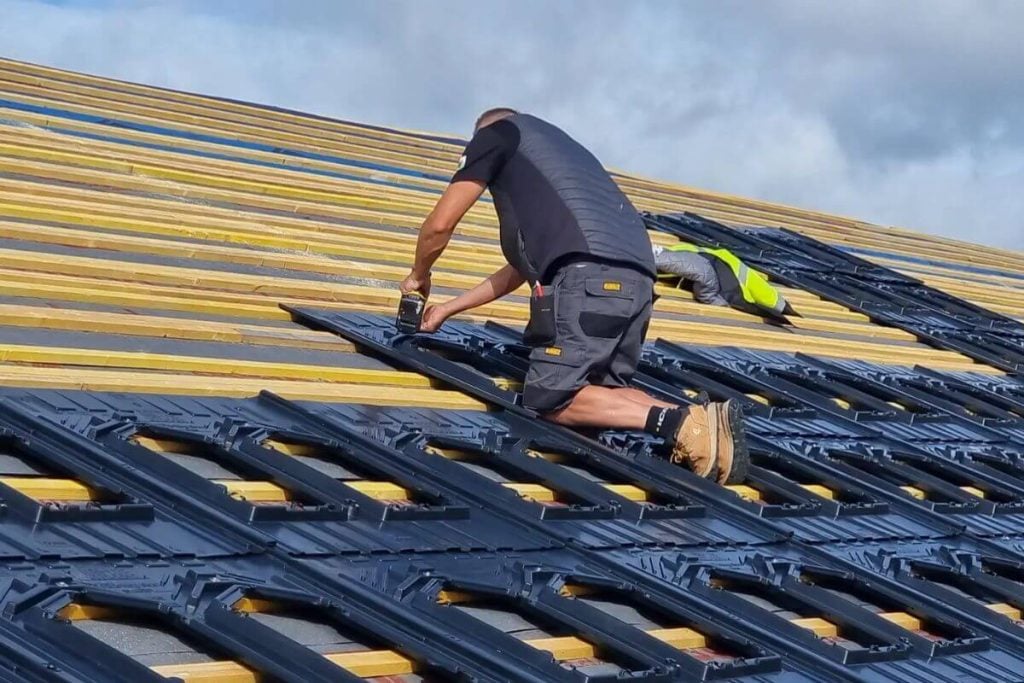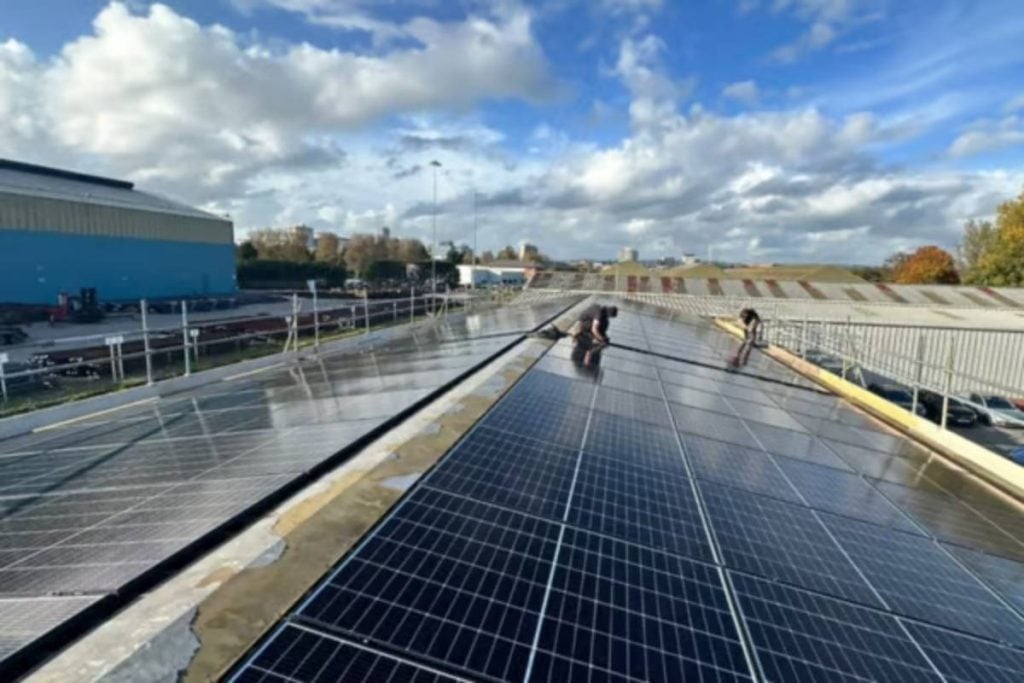If you’re thinking about solar panels for your business or home, you’re not alone. Solar photovoltaic panels (also known as PV) are set to be the world’s largest source of renewable energy by 2029. As renewable energy experts, a common question we get asked is, how much power does a solar panel produce?
Solar panels aren’t just great for the environment, after all. Whether you’re installing solar panels on your premises’ roof space, carport, or for your home, you’ll want to consider the energy you can generate against your initial investment. By harnessing the power of the sun, you can use renewable energy to cut costs and gain independence from fluctuating electricity prices.
In this guide, we’ll cover how much energy you can expect to generate from your solar panels alongside tips to help you maximise output and cost efficiency to make your organisation or home more sustainable.
How Does a Solar Panel Generate Electricity?
To understand how much power a solar panel can produce, let’s start with how they work. Solar panels convert sunlight into electricity through a process called the photovoltaic effect.
If you ever looked closely at a solar panel, you’d see it contains many solar cells which are usually made of silicone. As sunlight hits each cell, particles of sunlight known as photons will knock electrons loose from their atoms. This generates an electric current.
At this point it’s still direct current (DC), so not the kind that would power your kettle. This is where your inverter steps in to convert DC into alternating current (AC) or the electricity we all know and use.
We love this video from TED-Ed to help you visualise how solar panels generate electricity:
How Do You Measure Solar Panel Output?
When we measure the output of your solar panels, we’ll use a unit called watts (W). Out-of-the-box panels will all come with a rated wattage which has been measured under Standard Test Conditions (STC) that simulate ideal conditions.
For example:
- Residential panels can be 350W to 450W at mid-range and up to 500W for premium panels.
- Commercial panels are bigger and can range from 500W to over 600W.
However, it’s worth remembering that real-life conditions are rarely ideal. How your solar panels really perform will be influenced by anything from temperature and shading to the weather and rainfall especially if, like us, you live in South Wales.
How to Estimate Solar Panel Output for Your Location
This is where understanding your solar panels’ output can get really useful for making sure you’re getting the best out of your investment. Here’s how to estimate daily energy production for your panels:
- Find your panels’ rated wattage.
- Find the number of peak sunlight hours your location receives each day. This usually ranges from 3-5 hours in the UK, depending on the season and where you live.
- Multiply both figures.
For example, if you have a 400W panel and get 4 hours of peak sunlight on average, you can expect your panel to produce around 1,600 watt hours per day, or 1.6 kWh. To make your measurements even more precise, we recommend using a solar monitor or a multimeter to show your electricity generation in real time. The solar inverters we install for our clients will do this for you automatically.
To put this into perspective, in 2023, the UK generated 13,884 gigawatt hours in solar PV. Considering the average UK household uses about 3,400 kWh a year, this was enough to power more than all the homes in Greater Manchester, Birmingham and Glasgow combined.

The Cost Efficiency of Solar Panels
If you’ve been wondering whether a business or home solar panel system is worth the investment, the good news is that their efficiency is continuing to rise even as their cost is dropping. According to Which?, the average cost of installing a residential 3.4 kWp system is £7,000.
It’s worth keeping in mind though that these systems can last for 25 years, offering your home or business considerable energy savings over time. With energy prices rising by £111 for the average household in 2025, more businesses and families are choosing solar panels as a way to safeguard against rising costs. What’s more, you can also potentially sell back your surplus energy to the National Grid under the Smart Export Guarantee (SEG).
When it comes to installing renewable energy, you can also benefit from funding and grants that incentivise renewable energy. At Inspire Green, we can help you maximise your available funding opportunities with expert guidance on applications.
Maximising Solar Panel Output
When it comes to understanding how much power a solar panel can produce, you can’t forget that the output of your panels is linked to where you place them, the seasons and how you maintain them. Here are three factors you need to think about when it comes to maximising solar panel output:
1. How to Determine the Best Location for Solar Panels
Where you position your solar panels will make a big difference to the energy they produce. You’ll want to consider:
- How the panels are oriented, for example south-facing roofs are best in the UK for capturing the most sunlight.
- A tilt angle that’s typically equal to your location’s latitude.
- Shading from trees, buildings or any other obstructions.
When you work with professional solar panel installers, you can expect us to use digital mapping tools or solar calculators to find the best position for your panels. This careful planning at the start will pay dividends later, exposing your panels to as much sunlight as possible.

2. How Do Seasons Affect Solar Panels?
If you’ve ever noticed the change in light around our equinoxes, it’ll be intuitive that the season we’re in will have a big impact on the performance of your solar panels. To highlight this difference, it’s estimated that solar panels can generate up to 20 kWh/day in a UK summer, compared to less than 1 kWh/day in the winter.
This is where battery storage comes in. While in summer you’re likely to generate a surplus of energy, you can simply store this for overcast days or sell it back to the grid.
Don’t underestimate winter though. While in the UK we’re used to cloudy days and lots of rain, the cold can actually make your solar panels more efficient. This makes crisp, clear winter days the perfect time to stock up on solar energy.
3. Maintaining Your Solar Panels
Lastly, routine maintenance can help you make the most of your solar panels and extend their lifespan. Just like you might clean your gutters, solar panels can also become obstructed by leaves, snow, or dirt. Scheduling a regular inspection can help you prevent any problems that might be affecting your energy output and spot issues early before they develop into costly repairs.
How We Can Help
So how much power does a solar panel produce? We hope this guide has helped you understand how the electricity generated by your solar panels can vary based on size, quality and the location you have available.
Whether you’re exploring solar panels for your business, public sector or third sector organisation, or home, we can support you every step of the way. At Inspire Green, we’re passionate about renewable energy and committed to making it easier for you to harness it.
Learn more about our solar panel services here or get in touch for a quote.





